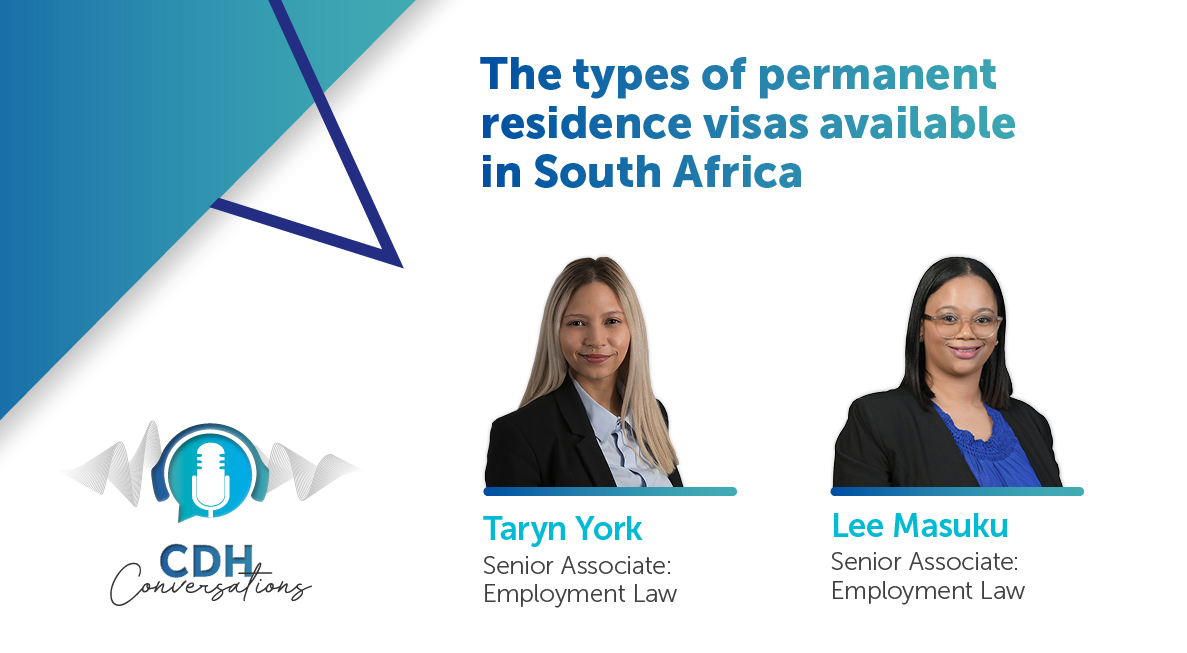Investor-state dispute settlement in the SADC region
At a glance
- The Southern African Development Community (SADC) has implemented the Protocol on Finance and Investment to promote investment and entrepreneurship in the region, requiring member states to create a favorable investment environment through strategies and legislation.
- The settlement of investor-state disputes was initially included in the Protocol but was later removed due to concerns about international arbitration, such as lack of transparency and high costs. The amended Annex 1 of the Protocol discontinued international investment arbitrations in the SADC region.
- The SADC Model Bilateral Investment Treaty (Model BIT) provides guidelines for investment policies and laws, recommending domestic and regional forums for settling investment disputes. It acknowledges the option of including investor-state arbitration but advises against it. The Model BIT differs from the Protocol in various aspects, creating challenges for harmonization within the SADC region.
The Protocol aims to foster investment in the region and outlines SADC’s policy on investment, requiring member states to enact strategies to attract investors and facilitate entrepreneurship among their populations. SADC member states are encouraged to implement legislation that creates a favourable environment for investment, such as tax incentives that ease financial burdens for private firms seeking to invest in the region. Annex 1 to the Protocol was amended in 2016 following criticism in the SADC region due to the perception that it failed to adequately balance investor protection and regulatory autonomy of host states and contained investment protection standards which contradict the recommendations in the SADC Model Bilateral Investment Treaty Template (Model BIT) of 2012.
The settlement of investor-state disputes is the gateway for the investment arbitration case between an investor and a state. This mechanism has, however, been decreasing in popularity in Africa due to concerns over the impartiality of arbitrators and the subjection of a sovereign state on equal footing with an individual person. This article therefore considers the settlement of investment disputes under both the Protocol and the SADC Model BIT.
The Protocol and concerns from South Africa
It is important to note that Article 28 of the original Annex 1 of the Protocol, which dealt with settlement of investment disputes, provided for the right of either an investor or state to refer a dispute to the SADC Tribunal, the International Centre for the Settlement of Investment Disputes or an international arbitrator or ad hoc arbitral tribunal for arbitration in the event that a dispute is not amicably resolved and after exhausting domestic remedies. Article 28 was, however, removed in its entirety from the amended Annex 1. This change was proposed by South Africa on the basis of concerns relating to the settlement of investor-state disputes by international tribunals. Such concerns include, inter alia, a perceived lack of transparency, the legitimacy of the international arbitration process, conflicting arbitral jurisprudence, independence of arbitrators, the prohibitive legal costs associated with international commercial arbitration, and excessive damages. The member states were of the view that Article 28 presented significant risks and removing it would help to obviate the risks associated with international arbitration of investor-state disputes. Investor-state disputes may be competently resolved or settled through domestic courts or tribunals. The amended Annex 1 effectively brought an end to international investment arbitrations in SADC under the Protocol.
Model BIT
In 2012, SADC introduced its Model BIT under the overall goal of the Protocol to promote harmonisation of the member states’ investment policies and laws. Even though the Model BIT is not legally binding, it a guiding document to governments that they may consider in any future negotiations they enter into relating to an investment treaty. It also provides an educational tool for officials and serves as the basis of training sessions for SADC government officials. It is important to note that even though the Model BIT was published more than 10 years ago, no state has used or adopted it yet. The settlement of investor-state disputes is regulated in Article 29 of the Model BIT. It rejects the incorporation of investor-state dispute settlement provisions in bilateral investment treaties and rather recommends domestic and regional forum frameworks in the settlement of investment disputes. According to the Model BIT, investors should rather vindicate their rights in domestic courts or arbitration within the host country’s institutions. Notably, the drafting committee of the Model BIT was of the view that the preferred option is not to include investor-state dispute settlements at all.
The Model BIT is, however, flexible and recognises that some states may nonetheless choose to include investor-state arbitration for different considerations. It therefore builds a carefully constructed process that circumscribes investor-state arbitration rights to alleged breaches of the treaty. It also expressly recommends against the inclusion of an umbrella clause and the transfer through this provision of domestic law issues into international law issues. As a standard procedure, the template recommends the inclusion of a provision that requires treaty arbitration tribunals to recognise and give primacy to dispute settlement mechanisms identified in any investment contracts for any matters related to the alleged breach of such contracts, even if restated as a breach of the treaty. This is supported by a provision that seeks an exhaustion of local remedies rule to be put in place, subject to a tribunal being able to assess whether the claims relating to the underlying measure can be addressed in a domestic court.
Tension between the Protocol and Model BIT
Although both the amended Annex 1 of the Protocol and the Model BIT deal with the resolution of investor-state disputes, they still differ in some fundamental respects. For example:
- The Model BIT introduces the requirement than an investor must first exhaust administrative remedies, followed by local remedies in the host state, unlike the Protocol, which has effectively discontinued international investment arbitrations in the SADC region.
- The Model BIT provides that a state may, upon receipt of a notice from an investor that it wishes to commence arbitration proceedings, propose mediation.
- Under the Model BIT, a state can bring arbitration proceedings against another state on behalf of an investor who is its national, while the Protocol does not provide for this.
- The Model BIT provides that arbitration hearings are to be open to the public and that this may be achieved though live broadcast of the hearings online.
- The Model BIT makes investor-state international arbitration an optional provision unlike the Protocol, which has effectively terminated them.
These fundamental differences do not bode well for harmonisation, because they defeat the objective of having a single wide investment regime under SADC. Save for the old generation BITs still in force (or which have been terminated but are still subject to sunset clauses), investment arbitrations have basically become extinct in the SADC region.
While the shift away from investor-state arbitration has no doubt eased the concerns of SADC members with regard to the risk of international investment arbitrations, it raises new concerns about the adequacy of the recourse mechanism available to investors in the region including investors from the SADC region itself. In the South African context, this is illustrated by recent judgments from the Supreme Court of Appeal in Trustees for the time being of the Burmilla Trust and Another v President of the RSA and Another (64/2021) [2022] ZASCA 22; [2022] 2 All SA 412 (SCA) (1 March 2022) and Luke M Tembani and Others v President of the Republic of South Africa and Another (167/2021) [2022] ZASCA 70 (20 May 2022) relating to investment disputes in Zimbabwe and Lesotho.
Influence on the rest of the continent
If SADC members accept that an investor-state dispute settlement mechanism (with its imbalances) is critical for the promotion and protection of foreign direct investment, they need to perhaps consider either re-establishing the SADC Tribunal and clothing it with jurisdiction to determine investor-state dispute settlements; and/or re-introducing the investor-state dispute settlement in Annex 1 of the Protocol. These options, however, seem unlikely in light of the past experiences of countries such as South Africa, Zimbabwe and Lesotho. These experiences have led to a growing movement for the discontinuation of investor-state dispute settlement mechanisms as reflected in the Model BIT and more forcefully the Annex 1 of the Protocol. With the African Continental Free Trade Area’s Investment Protocol up for negotiation, it will be interesting to see whether the SADC bloc can and will dissuade the continent to also jettison investor-state dispute settlement in favour of its stance, which comprises of the use of dispute prevention policies; state-state co-operation akin to diplomatic protection; alternative dispute resolution mechanisms such as conciliation and mediation; and the use of domestic courts, the ombud’s office or administrative review procedures, and exhaustion of local remedies as suitable substitution.
The information and material published on this website is provided for general purposes only and does not constitute legal advice. We make every effort to ensure that the content is updated regularly and to offer the most current and accurate information. Please consult one of our lawyers on any specific legal problem or matter. We accept no responsibility for any loss or damage, whether direct or consequential, which may arise from reliance on the information contained in these pages. Please refer to our full terms and conditions. Copyright © 2026 Cliffe Dekker Hofmeyr. All rights reserved. For permission to reproduce an article or publication, please contact us cliffedekkerhofmeyr@cdhlegal.com.
Subscribe
We support our clients’ strategic and operational needs by offering innovative, integrated and high quality thought leadership. To stay up to date on the latest legal developments that may potentially impact your business, subscribe to our alerts, seminar and webinar invitations.
Subscribe




